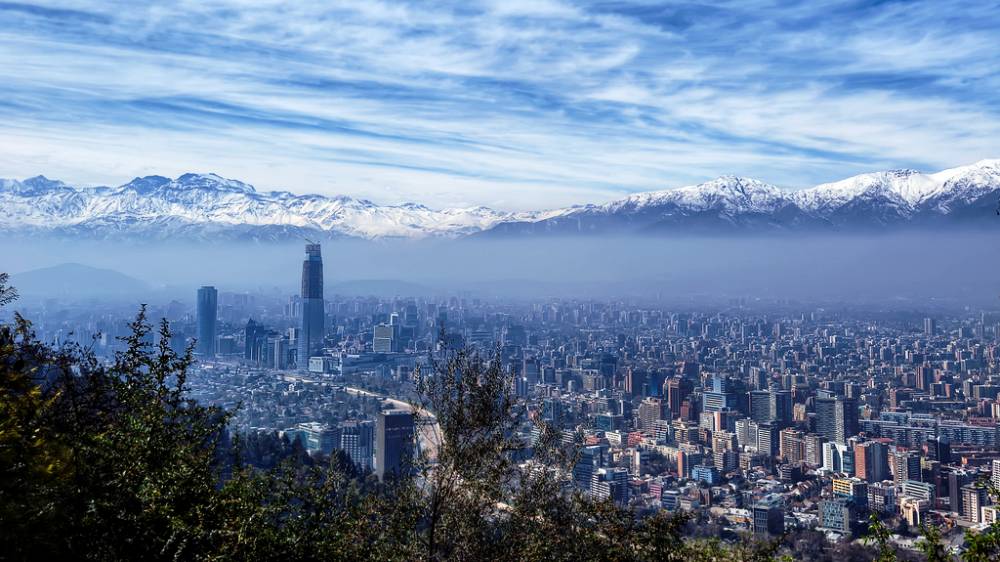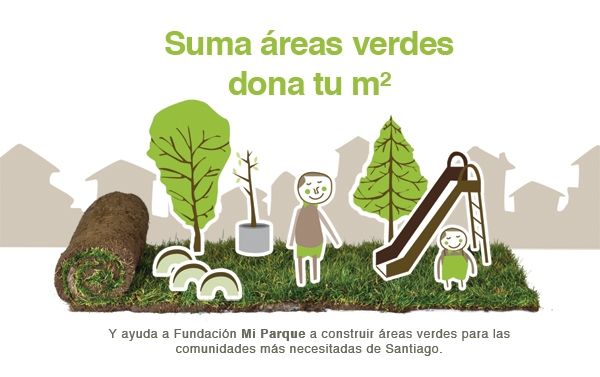#GC2022 is accepting submissions - 25d 27h 05m 44s
In the shadows of the steady expanding concrete jungle, Santiago de Chile is blessed with a crew dedicated to construct green spaces accessible to the public. In early 2013, together with three students from Copenhagen Business School which I today call great friends, we crossed the Atlantic (and the Amazon) in order to meet this social enterprise, and to work on their challenges.
By the time of our arrival, the organization of Fundación Mi Parque was running on solid management skills, with an impressive pool of resources and support of several communities and stakeholders. Honestly speaking, it was very difficult to improve this already highly efficient and innovative solution these bright minds had excelled to build. Thus, instead of talking about our work in Chile I would rather try to explain how we experienced this kind of initiatives, and what role it can potentially play in a broader understanding of human development. Before mentioning anything further, lets have a look on the context. Surely, without understanding it, how can we comprehend the broader picture and the scope the enterprise?

Santiago's Skyline, picture source Flickr
Santiago is by far the largest conurbation in Chile, with the Santiago metropolitan area population reaching 5.5 million inhabitants, roughly equivalent to 36 per cent of the total population. Located in one of the country's main valleys, the city is constantly growing in size and population. The government is trying to promote migration to other neighbouring towns and cities in order to reduce influx to Santiago, but this act is very difficult when the economic opportunities are very limited in areas outside of the capital.
Furthermore, air pollution is a source of great concern in the metropolitan area of Santiago. The city's geographic characteristics do not allow an efficient dispersal of air pollutants. Chile has 550 urban parks that contribute to 4.754 acres of green space; while this is not even half of the 9m2, which is recommended per capita1. As a consequence, 56 per cent of all Chileans have never visited a public park.

Fundación Mi Parque
A group of Chilean architects, who witnessed this growing problem, started a project in 2007 with the purpose to improve the everyday environment in Santiago's urban communities. This was the birth of Fundación Mi Parque, a social enterprise aiming to improve the green areas of urban Chile, which is suffering from the narrow scope of public housing policies and short term oriented urban planning. The consequence of these policies generates very little worthy public space for communities' social life. The suppressing communal life has further enhanced the existing destructive activities such as drug addiction, alcoholism and depression, occurring especially among the youth. The suffocating concrete surroundings are present in most of the suburban areas of greater Santiago; the shortfall of green spaces in these areas is tremendous when compared to the lavish public parks and gardens of the more privileged neighbourhoods such as Vitacura.
Faced with this challenge, Fundación Mi Parque developed a system where private companies, municipalities and communities jointly regenerate the public space and green areas that revive the neighbourhoods. The projects are deployed according to the research, instructions and design process conducted by the team. To reach their mission, Fundación Mi Parque has made a great job of acquiring support from various actors in the private and public sector. Their model will be explained as followed.
The model
Fundación Mi Parque is a social enterprise following a "No Loss No Dividends" philosophy, meaning that all profit is reinvested within the organization to expand the operations and increase the social impact. Working in this "no mans" land between a traditional company and an NGO is not an easy task, yet Mi Parque has found a way to cope with the challenge by including multiple stakeholders in the equation. Since the most deprived communities in Chile have little resources to finance the construction and maintenance of green areas, Mi Parque was forced to invent a new model and strategy between public and private actors, who could inject the sufficient resources and management skills to realize this kind of projects.
The model is build around team building, where private companies financially sponsor a project site and preform the actual construction of the space with the help of their employees. Companies are using this happening as a social activity for e.g. the marketing department, hoping that it might boost the motivation and attitude of their employees. As presented in the video beneath, company brands are exposed on each project site, and companies generate a great amount of positive PR by engaging with Mi Parque.
The case of Starbucks:
The local community is also participating in the activity and their needs are taken into consideration from the very beginning of the process. Several community meetings are held and the design team does not take any final decisions before consulting with the community. Budgets and expectations are aligned and the local municipality is integrated in the project and takes the responsibly of maintaining the green space after construction.
The organization is additionally generating awareness and collecting financial contributions by arranging "After office" picnics. In the beautiful Bicentenario Park, people working in Santiago's business district gather after work and socialize around this social cause.
Video of the picnic:
Since their first initiative, the organization has realized over 130 projects with the involvement of more than 50 different companies. The vast majority of these projects are clustered in the metropolitan area of greater Santiago de Chile, but the ambition is to expand beyond the Capital. This public/private sector collaboration has truly proved to be efficient and as a result, Mi Parque has received several national and regional awards for their work.
Video of a construction site:
Follow up initiatives
Following the construction of green spaces, Fundación Mi Parque is doing a great deal for measuring their impact. Together with J-Pal, Mi Parque is currently conducting a large-scale impact assessment, and the next couple of years will present the result2.
As for now, the organization has revitalized spaces often forgotten or simply neglected and ran down. The daily life of the communities living around these spaces has been significantly enriched, and the community feeling is strengthened through increased activities and engagement. It is especially the youth who is benefitting from this initiative; Mi Parque´s work has been a key factor in the overall strategy to decrease youth gang activities and delinquency. The communities who normally struggle on a daily basis can now take ownership of the spaces they created, and finally endorse their increased quality of life.
Impact
6 years
+50 companies
3.890 volunteers
133 projects
386.000 m2 recaptured
152.000 beneficiaries
6.461 trees planted
footnote 1: source parques urbanos llegan a 550 en Chile y zonas extremas muestran déficit
footnote 2: Ana Carolina Mendoza is currently in charge of the operation